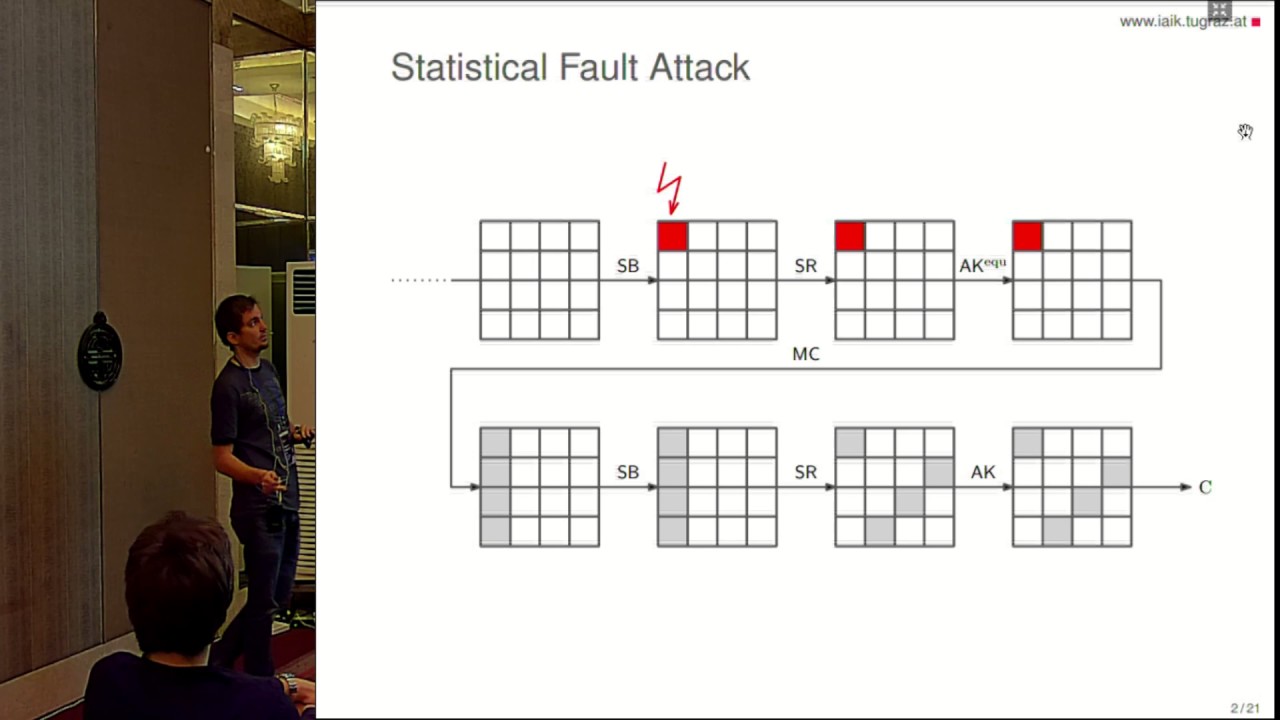Welcome to the resource topic for 2016/616
Title:
Statistical Fault Attacks on Nonce-Based Authenticated Encryption Schemes
Authors: Christoph Dobraunig, Maria Eichlseder, Thomas Korak, Victor Lomné, Florian Mendel
Abstract:Since the first demonstration of fault attacks by Boneh et al. on RSA, a multitude of fault attack techniques on various cryptosystems have been proposed. Most of these techniques, like Differential Fault Analysis, Safe Error Attacks, and Collision Fault Analysis, have the requirement to process two inputs that are either identical or related, in order to generate pairs of correct/faulty ciphertexts. However, when targeting authenticated encryption schemes, this is in practice usually precluded by the unique nonce required by most of these schemes. In this work, we present the first practical fault attacks on several nonce-based authenticated encryption modes for AES. This includes attacks on the ISO/IEC standards GCM, CCM, EAX, and OCB, as well as several second-round candidates of the ongoing CAESAR competition. All attacks are based on the Statistical Fault Attacks by Fuhr et al., which use a biased fault model and just operate on collections of faulty ciphertexts. Hereby, we put effort in reducing the assumptions made regarding the capabilities of an attacker as much as possible. In the attacks, we only assume that we are able to influence some byte (or a larger structure) of the internal AES state before the last application of MixColumns, so that the value of this byte is afterwards non-uniformly distributed. In order to show the practical relevance of Statistical Fault Attacks and for evaluating our assumptions on the capabilities of an attacker, we perform several fault-injection experiments targeting real hardware. For instance, laser fault injections targeting an AES co-processor of a smartcard microcontroller, which is used to implement modes like GCM or CCM, show that 4 bytes (resp. all 16 bytes) of the last round key can be revealed with a small number of faulty ciphertexts.
ePrint: https://eprint.iacr.org/2016/616
Talk: https://www.youtube.com/watch?v=jN0Vv-ldTt8
Slides: https://iacr.org/cryptodb/archive/2016/ASIACRYPT/presentation/27913.pdf
See all topics related to this paper.
Feel free to post resources that are related to this paper below.
Example resources include: implementations, explanation materials, talks, slides, links to previous discussions on other websites.
For more information, see the rules for Resource Topics .
